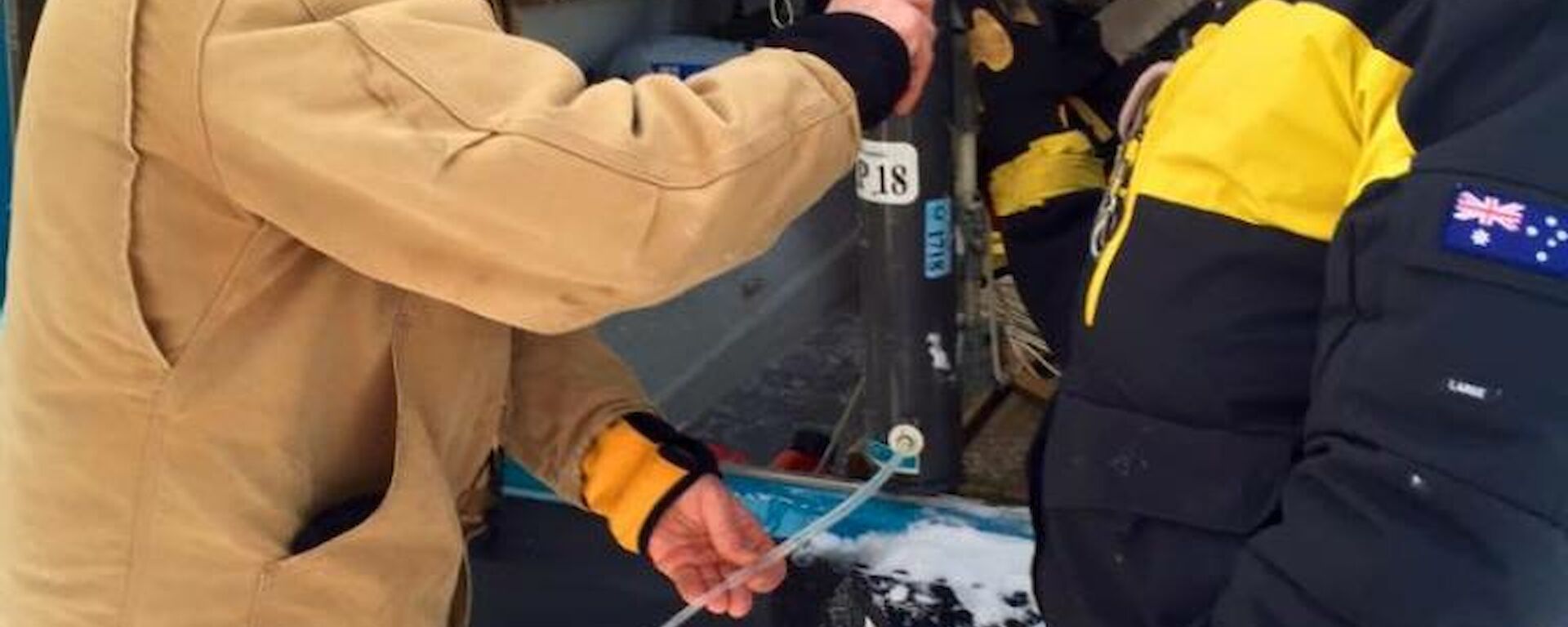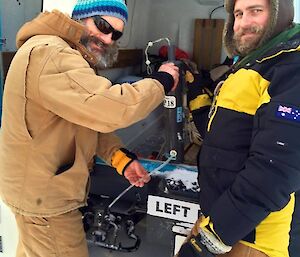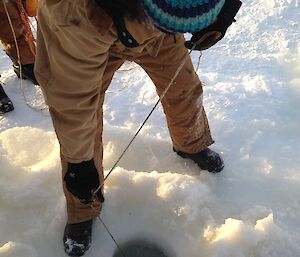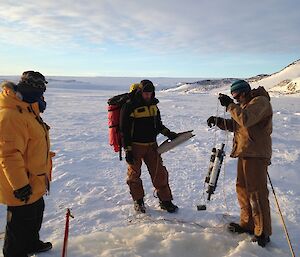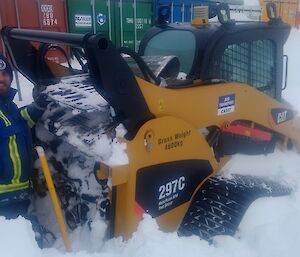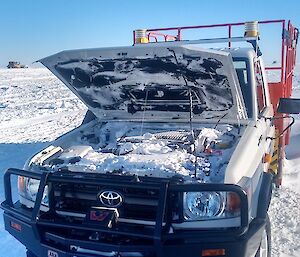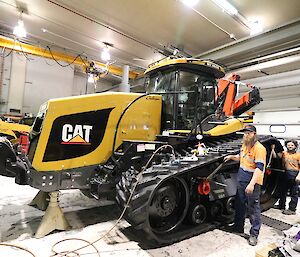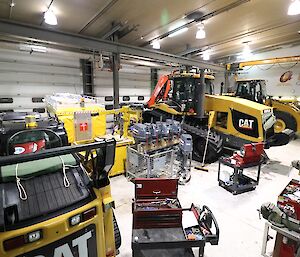With the fantastic weather conditions last Sunday offering little to no wind at −20°C we were presented with an opportunity to head out onto the sea ice of O’Brien Bay and collect a water sample for the ongoing Antarctic Free Ocean Carbon Enrichment (antFOCE) project.
After parking the Hägglunds up at the water’s edge and enjoying a cup of tea to warm us up before the endeavour, we radioed into station before collecting our kit and heading out onto the ice to find the test location. Once in position, the Jiffy drill was fired up, and Mick and Nick went about the task of drilling through approximately three metres of ice to the brine and into the salty depths below.
The next step was to set up up the ‘meniscus tube’ which is designed to take a sample from the water one metre off the ocean floor. The springs were loaded and the unit lowered until it found its way into position. Brilly picked up the weight while explaining the operation of the unit before dropping it into the hole. As it ran down the rope, we waited with anticipation for it to collide with the actuator snapping both ends of the canister shut, trapping in all that Antarctic icy goodness.
With a nod of the head, it was confirmed that the job had been done. We pulled up the rig, packed up the gear and headed for the Hägg to extract the sample. Unfortunately at these temperatures the taps had frozen almost instantly, so we had to wait until back on station for a little warmth before we could get things flowing. The sample was withdrawn, bottled and recorded and will be ready for the antFOCE team to analyse when the opportunity arrives to get it back home.

